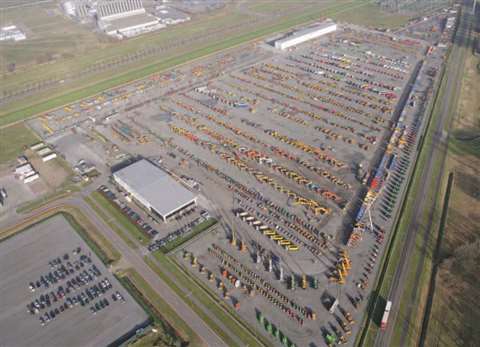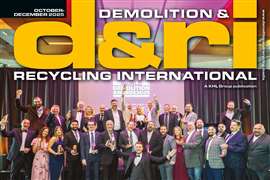Making the most of your assets
15 April 2008

Since Tadano IMES Ltd held its first online auction of rough terrain cranes through the online auction service Assetline.com in 2001, online crane auctions have become popular around the world, opening up a larger selection of equipment to a far larger number of potential buyers.
Some auctions take place only online, some are held on site with live bidding and some are also broadcast over the internet with a live bidding facility. Others also include a live video feed over the internet of the sale as it happens.
Buying and selling cranes at auction is now a fully international process, which allows sellers to promote their equipment to the widest possible audience, and buyers to check out the widest range of equipment ahead of the auction. It allows sellers to quickly realise assets and receive prompt payment for equipment they no longer use or want.
Auction houses handling cranes range from those with multiple offices offering auctions around the world, to those with a single office but all use the internet to promote their sales. A wide range of ancillary services is also offered, from financing to transportation and translators.
Maximum return
The process of selling can begin with the simple submission of equipment for unreserved sale, as seen and with no warranty. Another service on offer by auction houses is evaluation of the crane and assessment of the equipment's condition for an effective sale with maximum return. Some machines need refurbishment or repair to gain the best value, a service offered in-house by some auction houses. If the work is completed by the auction house the cost is deducted from the selling price.
International auction house Ritchie Bros., headquartered in Canada, says it sold 203,000 items of equipment in 2005, giving it the opportunity to review a wide range of models and standards. Ritchie Bros provides an evaluation report on the equipment, which includes details of the mechanical condition and indicates whether the equipment can be sold as-is or with, for example, a simple wash, repairs to moving parts, upholstery, metal and paintwork. The company has refurbishing centres at all its permanent auction sites in North and South America, Europe, the Middle East, Africa and Australasia, which are operated to local environmental regulations.
World Wide Auctioneers (WWA), based in Dubai and Qatar, but with franchise partners in Australia and Indonesia, tailors auctions for clients with large equipment inventories, holding the sales either on the client's premises or in a WWA auction yard. Smaller clients are invited to join other sellers, to obtain maximum exposure. Where the seller wants cash quickly this can be advanced against the sale or WWA will buy the inventory outright. WWA also visits the customer to evaluate the equipment and may also recommend some refurbishment.
Buying
For buyers the first rule is registration. This can be done before the sale, often online, and usually consists of providing a name, address, company (if relevant), photographic identification, and proof of ability to pay, such as a bank guarantee letter. A bidder's number is then provided on a bidder's version of the sale catalogue. The sale catalogue can often also be downloaded from the auction house web site ahead of time or provided in hard copy.
Some companies, including World Wide Auctioneers and Ritchie Bros, offer a guide to registration and the bidding process on their web sites, together with details of finance for purchases, which they can arrange in advance through established finance houses.
During a live sale, each piece of equipment is either driven across a ramp or shown in the stock yard, and, for larger sales, may also be shown on video to buyers bidding via the internet. Live bidders raise their bid is relayed to the auctioneer via a bid catcher, for added security. Internet bidders and those bidding by proxy through the auctioneer are also recorded against their bid numbers.
Most auction houses state that they operate unreserved auctions, meaning there are no hidden reserves and that proxy bids will be applied as if they were being placed in the auction room.
Afterwards
Settlement usually begins as each item is sold and debited to the bidder's account. Some auction houses require payment on the day while others give up to seven days. Local taxes usually apply to all transactions. Full details are contained in the Terms and Conditions given in the auction house documentation.
Transportation of equipment to and from the auction can usually be arranged by the auction house and, if the equipment has been refurbished, can be used as soon as it arrives at the buyer's own site.
The view at World Wide Auctioneers is that, “Both buyers and sellers find that the unreserved auction method gives confidence that the equipment has traded for a fair market price.” And at Ritchie Bros, “The unreserved auction method allows every bidder to participate on a level playing field in which negotiation skills and buying power are irrelevant. With this open and transparent auction method, buyers can be confident that they pay fair market value for their purchases.”




